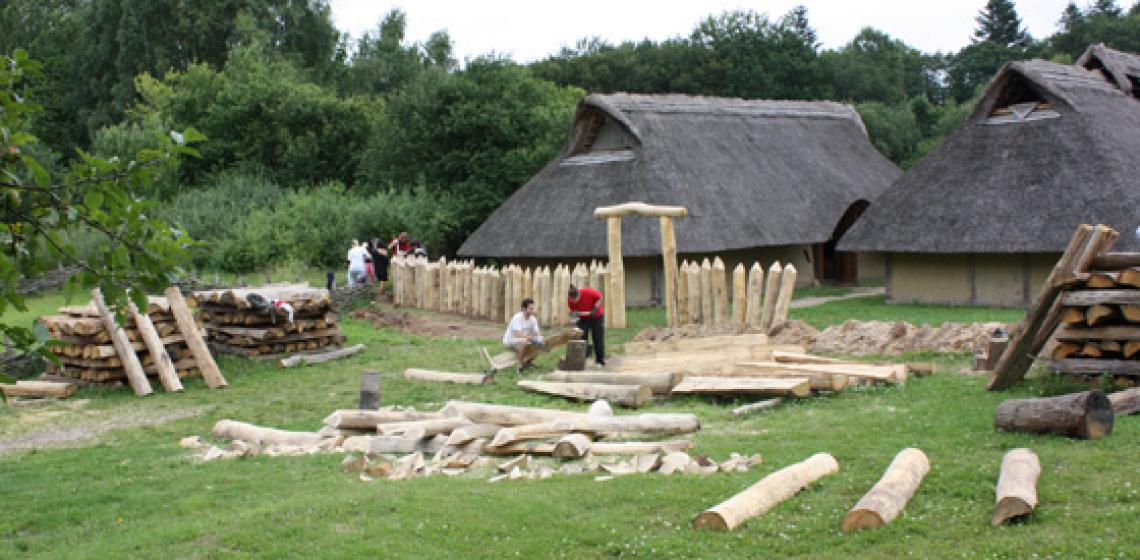
As one of the first “offspring” of the 1960s Lejre approach, Vingsted Historiske Værksted was set up near Bredsten. It still plays an important role in the Danish network of archaeological education centres (Historiske Værksteder or historical workshops).
Travel back in time to the Iron Age. Life around year 0 and the following centuries was in tune with nature; always subject to the changing of the seasons and the moods of the gods...
The houses in the Iron Age village are only open when events and other activities are taking place. Take good care of all animals and houses – we do!
People worked hard to survive. The animals and fields had to be tended, and in the surrounding countryside berries and herbs were gathered. The blacksmith, potter, weaver and other craftsmen made and repaired clothing and tools. Mostly for use in the village, but also to trade or sell when a merchant from distant lands passed through.
The Iron Age village in Vingsted is Denmark’s largest reconstructed Iron Age village. Houses, fields, smithy, sacrificial site and livestock form an entire Iron Age settlement. Here you can take part in activities and learn what life was like for Iron Age people.
The Iron Age village consists of several reconstructed houses and farms from various known Iron Age sites in Jutland. The buildings are named after the places they were found.
The animals
The Iron Age people had sheep, goats, cattle, pigs and horses. Most animals were for breeding, working and producing dairy before they were eventually eaten.
Most people were farmers. They had many different animals, so they were self-sufficient in everything like meat, hides and wool. Livestock were important for survival and therefore well looked after.
The Iron Age village has two bullocks, a herd of Gute sheep and Danish landrace goats. Join in when milking, feeding, grooming and working in the stable at various events all year round.
The chief and the craftspeople
Each family lived on a fenced-in farm. Around all the farms there was a common fence. From the size of the farms in the Iron Age village it is evident that some were richer than others.
In Hoddehuset, the village potter lives with her husband, who is a blacksmith. The smithy is located behind the house, which has living quarters in the west and a barn in the east. The potter’s workshop is the small house in front of the farm.
Steppinggården is the village’s largest farm. The chieftain lives here with his wife. In the adjoining buildings we find the stable and the weaving workshop with the völva’s belongings.
Unlike the other houses in the village, Steppinggården does not have stable and habitation in the same house.
